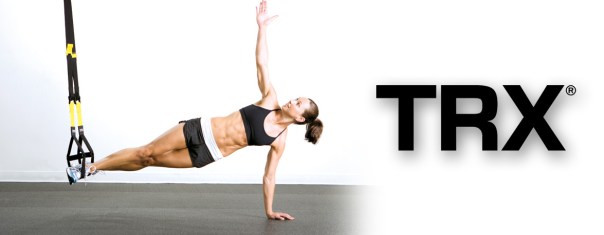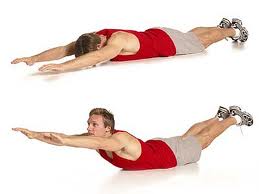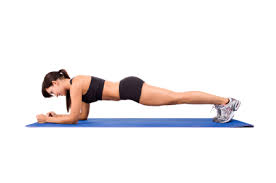Blog Archives
GET READY FOR SKI SEASON
Ski season is starting. Are you ready for skiing? How your body is ready for this, as some call it light recreational activity, but skiing is much more than that. Find out in this article the most important issues related to the preparation for skiing and evaluate your ability to avoid injuries which are increasingly common due to inadequate preparation.
I have personally witnessed how unprepared the body for strenuous ski days, there are serious consequences for violations, and another failed winter ski vacation SHOULDER DISLOCATION AND RECOVERY-my story. Muscle fatigue, lack of stamina, concentration and other disadvantages are the main cause of crashes with serious consequences. Experiences and experts say the biggest enemy is muscle fatigue for skiing, and it is responsible for many ski injuries. The data shows that during the seven-day ski break, on Wednesday and Thursday, going on the greatest number of falls and accidents, especially in the afternoon! When you falls the most common injury is knee injury, as a result of crossing skis (anterior cruciate ligament injuries with almost 10-15% frequency), next one is dislocations of shoulder, injuries collarbone, hip injuries and others. Such injuries can permanently prevent you ski or may result in chronic pain and problems throughout life.
There are basic principles and principles of training on how to prepare your body for the efforts that follow the ski vacation. Basic components of the preparation are: Cardiovascular Training, Functional Strength Training, Flexibility Training, Balance and Proprioception Exercise, Specific Ski and Plyometric Training.
Preparation and training should start from 6 to 10 weeks before the holiday. Cardio training consists a minimum of 30 minutes of cardio exercise with a change of pace from 2 to 3 times a week: bike, running, rowing … If you can not endure the intensity for 30 minutes, insert a pause of 1 to 2 minutes between activities than 3 minutes. Functional strength training is strengthen the entire kinetic chain represents a functional simulation of movements in skiing. Individually perform exercises and movements (jumps, steps forward, kettlebell, ropes, a combination of push-ups, pull-ups and burpees) and later assembly into one unit will prepare your body for similar tasks that await you on the track. Flexibility training is compulsory and represents a very important static and dynamic stretching torso and legs in preparation for skiing. Your body will be more flexible and less susceptible to injury collisions and falls. Stretching after worm up and after functional training and strength training! Training of Proprioception and Balance. Dynamic equilibrium must control the balance in body movement while skiing. The basic ski movements and techniques involve transferring weight from one foot to the other, and a balance through exercise proprioception that provides better control of movement in the knee (T plates, plate with a semi-sphere, cylinders of different sizes, SLACKLINE – wide band stretched between two supports, INTO BOARD – slab roller, BOSU ball) is fixed for safe skiing. Specific ski and Plyometric Training simulates real ski movements, develops explosive power of legs and CORE muscle (strengthening the abdominal wall, rotator troops and lumbar). Through the basics of exercise squats and jumps with the load to the cables for more faithful simulation of a particular ski position.
Active stabilizers of the knee are the most important when it comes to strengthening the muscle and prevention of skiing injuries. Include:
extensors of knee – the quadriceps
hamstrings, flexors of knee – hamstrings bits: muscle biceps femoris, semitendinosus, semimembranosus
adductor and abductors of leg – large, long and short adductor, muscle gracialis
Here you can look at the examples of exercises, for more information and an appointment please contact mail maremikic@yahoo.com
TRX – the best functional workout
Današnji fitnes se zasniva na što jednostavnijim ali što funkcionalnijim treninzima koji pogađaju čitavu mišićnu muskulaturu. TRX predstavlja jednu prostu ali veoma efikasnu i funkcionalnu spravu koja će angažovati sve mišiće tela uz preko 300 kombinovanih vežbi. U ovom članku ćemo se pozabaviti najefikasnijim vežbama na TRX-u.
Today’s fitness is based on as simple and functional training that affect the whole muscle musculature. TRX is one simple but very effective and functional device that will engage all muscles of the body, with more than 300 combined exercises. In this article we will address the most effective exercises on TRX.

TRX se sastoji iz dva kraka na kojima se na kraju nalaze ručke. Kraci se podešavaju po dužini i time se opseg pokreta povećava ili smanjuje. To je jako bitno kod osoba različite utreniranosti kako bi trening prilagodili prema svakome. Vežbe se izvode samo uz korišćenje vaše telesne težine, i pod određenim uglom koje vaše telo zauzima prema TRX-u ili podlozi dozira se težina vežbe.
TRX is consists of two arms, on which at the end are handles located. Spokes are adjusted in length and thereby the range of motion increases or decreases. It is very important for people of different well trained to adapt training to everyone. The exercises are performed using only your body weight, and at a certain angle to your body takes to the TRX or medium dosed weight exercises.
Prednosti TRX-a:
- napredak u performansama uz pomoć telesne težine
- visokointenzivni treninzi koje pospešuju sagorevanje masti i definisanje vaše muskulature
- izvrstan trening za jačanje CORE mišića
- izgrađujete odličnu stabilnost, mobilnost i fleksibilnost vašeg tela
- povećavate vašu izdržljivost
- odličan kod rehabilitacija i oporavka od povreda
- izolacija i jačanje specifičnih mišića
- lako prenosiv i lak za montiranje
Advantages of TRX:
- advances in performance with just your body weight
- high-intensity training that enhances fat burning and define your muscles
- great workout for strengthening CORE muscles
- build excellent stability, mobility and flexibility of your body
- increases your endurance
- excellent for injuries recovery and rehabilitation
- insulation and strengthening specific muscle
- easily portable and easy to mount
Sada ćemo vam predstaviti dva seta vežbi koje su najefikasnije i najčeće se izvode na TRX-u. Ujedno su namenjene i za početnike i za one koji su već utrenirani.
Now we will present two sets of exercises that are most effective and most commonly performed on TRX. They are also designed for both, beginners and for those who are already trained.
PART I
PART II
Pokušajte da svaku vežbu izvedete što pravilnije kako bi angažovali deo tela za koji je vežba specifično namenjena. Vežbe se mogu izvoditi 30 sec između svake je pauza 15 sec u 4 runde ili kruga između kojih je pauza 1 min. Ovakav funkcionalni trening će sagoreti puno kalorija a ujedno ojačati vašu muskulaturu, ubrzati metabolizam i poboljšati vaše performanse.
Try to perform each exercise as correctly as possible, to engage part of the body which exercise is specifically intended. Exercises can be run 30 seconds, between each the rest is 15 seconds in a 4 round between them rest is 1 min. This kind of functional training will burn a lot of calories and also strengthen your muscles, speed up metabolism and improve your performance.
SPORTS DIAGNOSTICS
Sports diagnostic represents a major process control, planning and implementation of the training process, through science. Today it is more developed, implemented and improved. The benefits of this way of relating to sports and athletes, and some other interesting things about these topics, we will present in the following text.

One of the biggest problems in modern sport is that the coaches for many years run by the old “proven” method. One of the problem apparently is to give some information about what is happening towards the athletes and those (in) adequate information trying to plan training. The result is that they have a lack of quality information, while you may have a lack of skills and knowledge to adapt the organism to increased physical efforts and the work carried out. Therefore it is no surprise that information is, since 2000th over 50 players died on the play ground. One gets the impression that it is actually a natural selection, on the principle of survival of the fittest. Half of these accidents occurred in the past 5 years.
So it is right time to introduce Science in sport? It is right time to work only the highest quality professionals? It is right time to stop the gambling with young lives? And to understand the value of a young life, and for correcting such errors no second chances?
Although there are countless reasons why athletes should be tested, our experts refuse to engage in modern diagnostic flows. Are the reasons for lack of interest and ignorance, or they are still confident in their approx abilities. The system itself allows coaches, after completed secondary school, to go on a weekend seminar, pay a fee and enter into a collective made up of non educated people who have been prescribed the same methods and erroneous, inadequate training damaging their athletes. Problem as a knowledge based on the level of research in the 50s of the previous century, which are not based on practice than on statistics, and thus the figure of 50 deaths of players is only a small part of the overall irrelevant statistics and the amount of players that are in circulation, so it is speak little victim for more interest.
Diagnosis is an area still insufficiently developed, because the equipment is expensive and not so many people know how to use it properly. One fact to a diagnostic device can be interpreted in different ways, and therefore the vision of experts takes precedence over education and vocational and profession. The functional state of the organism and testing of athletes, through the prism of the very requirements of a given sport, is something that should be the task of all sports officials. Control techniques, mechanics, posture, muscle status, metabolic processes in relation to sport is much important and this aspect is very easily applicable in the training because they diagnostics and training actually two parts of a puzzle, a puzzle that can bring progress and save many lives. A large number of children suffer from postural disorders, deformities, obesity … but the problem dealing with the parents themselves only when it comes, “5 to 12” or something bad happens. This problem proper access sport in cooperation with diagnostic centers could be minimized through proper functioning of the clubs, not the production of players, could be treated. That can testify to the fact former chief diagnostician FC Schalke who says that there is a system diagnostics on all levels of play, and that the trainers “stack” of paper easily hide in the side because they believe your instincts, and these institutions are becoming more important than scientifically based arguments which are often i do not watch. What’s the point of the test and what we’re actually talking about sport, awareness of experts and the future of our sport?
What does modern diagnostics and tests show, and what are its benefits (we will mention just a few):
- discovering motor faults
- muscle imbalances
- early diagnosis of injuries
- assessment of motor skills
- comparison of abilities compared to athletes around the world
- prediction of development
- assessment of technical elements with the ball and without the ball (technique sprint, the technique of stopping, change of direction, the technique of movement against the violation of the function of the game, etc.).
- training of technical elements for insight into the shortcomings of
- goal setting
In the following video we will show how the case looks a diagnostic treatment of the young tennis player.
PROBLEM WITH LOWER BACK
What makes the lower back:
Five lumbar vertebrae that connect our pelvis to the top of the spine.The six discus that protect our vertebra and absorb all incoming attacks. The nerves and spinal cord that conduct impulses to our muscles from the brain and their role is most similar to the “current cables “. Small joints that we provide to all funcion properly and maintain both stability and mobility. Ligaments and muscles without which the function of the spine is unthinkable, because they give us strength and also provide stability.

The most common activities what give as a pain:
Each working or sporting activity or activities of daily living, if performed incorrectly or sudden or long it lasts, it can cause pain in the lumbar region of the back. The pain is most often associated with the following activities:
improper lifting of any weight, where the hull flexes and rotates the sudden movement of rotation, bending or rotation and stretching hull prolonged sitting lengthy car ride long walking prolonged standing bad position during sleep violations of bone and muscular lumbar region – trauma (usually traffic accidents, injuries during sports activities …)
Muscle weakness is due to inactivity. Muscle imbalance is one of the most important causes of pain. Muscle strength of individual muscles and muscle groups should be balanced, harmonious and balanced.
With kineziteraphy (medical exercise) is begun when fully relieve the pain. Our goal is to take strong musculature of the burden of the lumbar spine. It is important to note that there is no activity of daily life that strengthens lumbo-sacral spine extensors. Also, there is not a sporting activity that strengthens the muscles of this region. It is the most common cause of these problems.
Exercises for preventing pain and strengthen the lumbar your muscles:
Exercises that you can do to strengthen the lower back can work at home in nature or fitness center. The simplest and most are static contraction exercise (endurance) running on the ground:
1. Alternating vertical rise from the ground opposite arm and leg endurance of 10-15 seconds then changes, exercise is performed without a break in the 3 series alternately.
2. Gently lift even lower and upper extremities at the same time and returns to the starting position, the exercise is performed in 4 sets of 10-15 reps
3. Position Plank, endurance in a given position, the focus is on the abdominal wall that needs to be constantly in contraction, the exercise is performed in three series with the endurance of 15-30 seconds
When enough to strengthen the muscles may be the ancestors of the execution of more complex and demanding exercises:
1. Extension backs, 3-4 sets of 10-15 reps
2. Good morning exercise, initially running without load and later with load, 3-4 sets of 10-12 reps
3. Dead lift, the exercise is performed with a light load in the beginning, with a focus on the right position of the back in every position, 4 sets of 8-12 reps
Exercises are performed 4-6 times per week at first. Later, when there was a considerable reinforcement lumbar necessary to maintain muscle tone with working out 2-3 times a week.











 Hometrica Consulting
Hometrica Consulting Studio d'arte e architettura
Studio d'arte e architettura Savez za Rekreaciju i Fitnes Srbije
Savez za Rekreaciju i Fitnes Srbije Prote.in Restoran
Prote.in Restoran